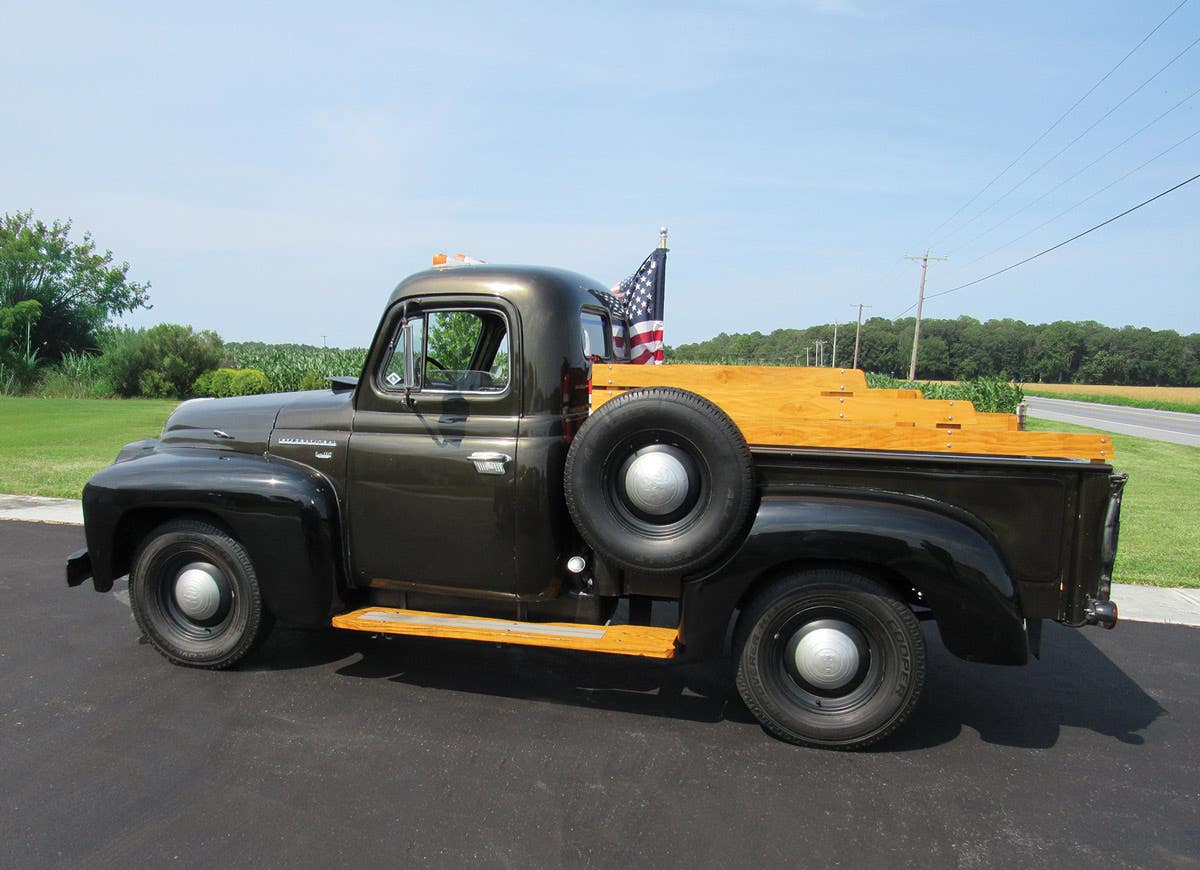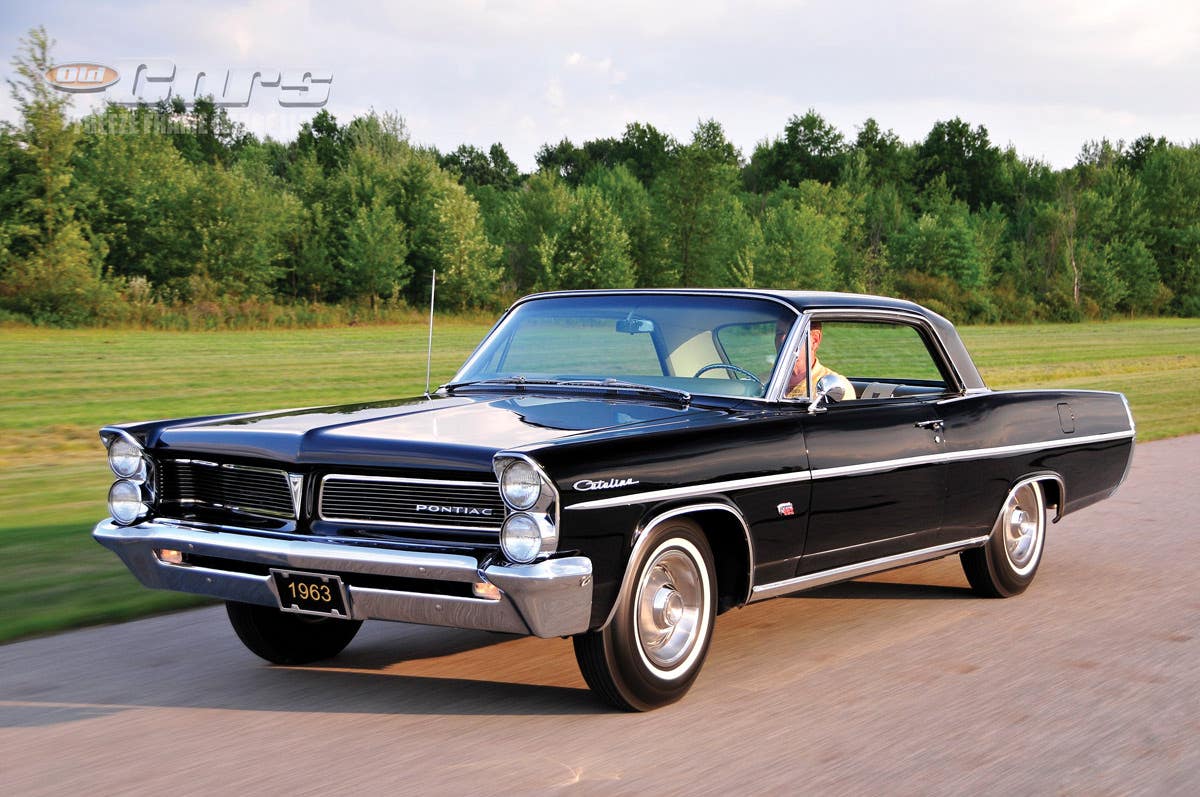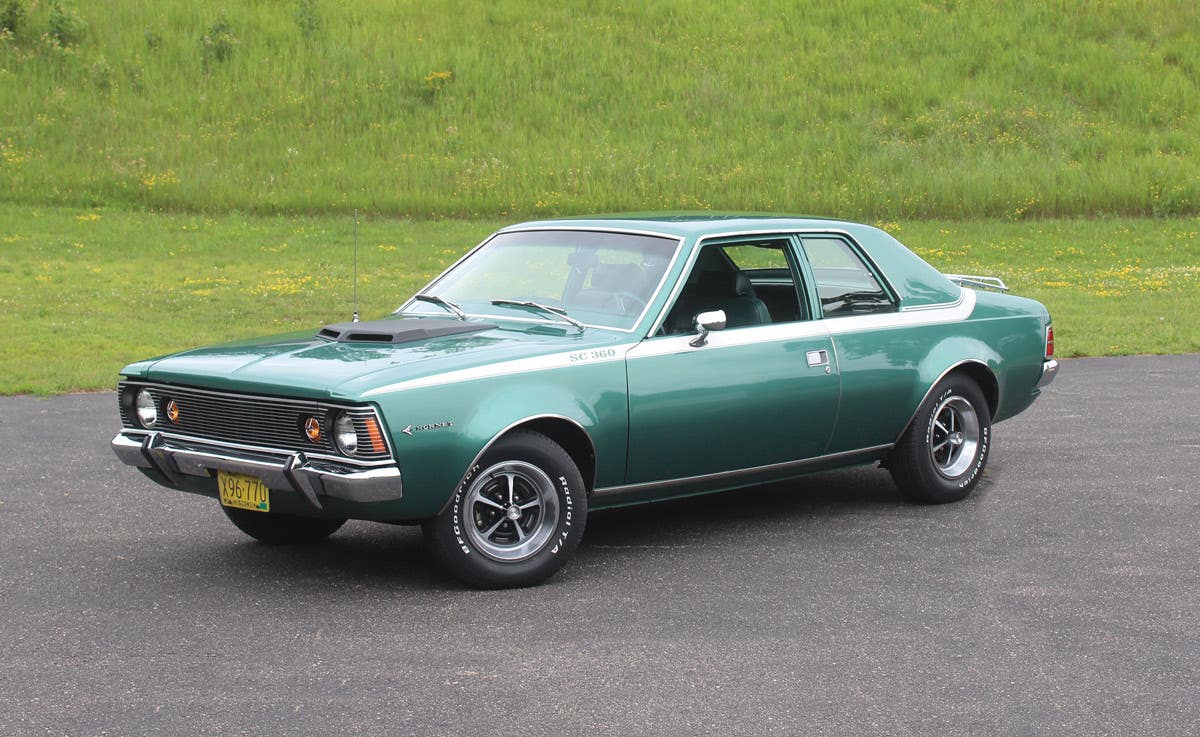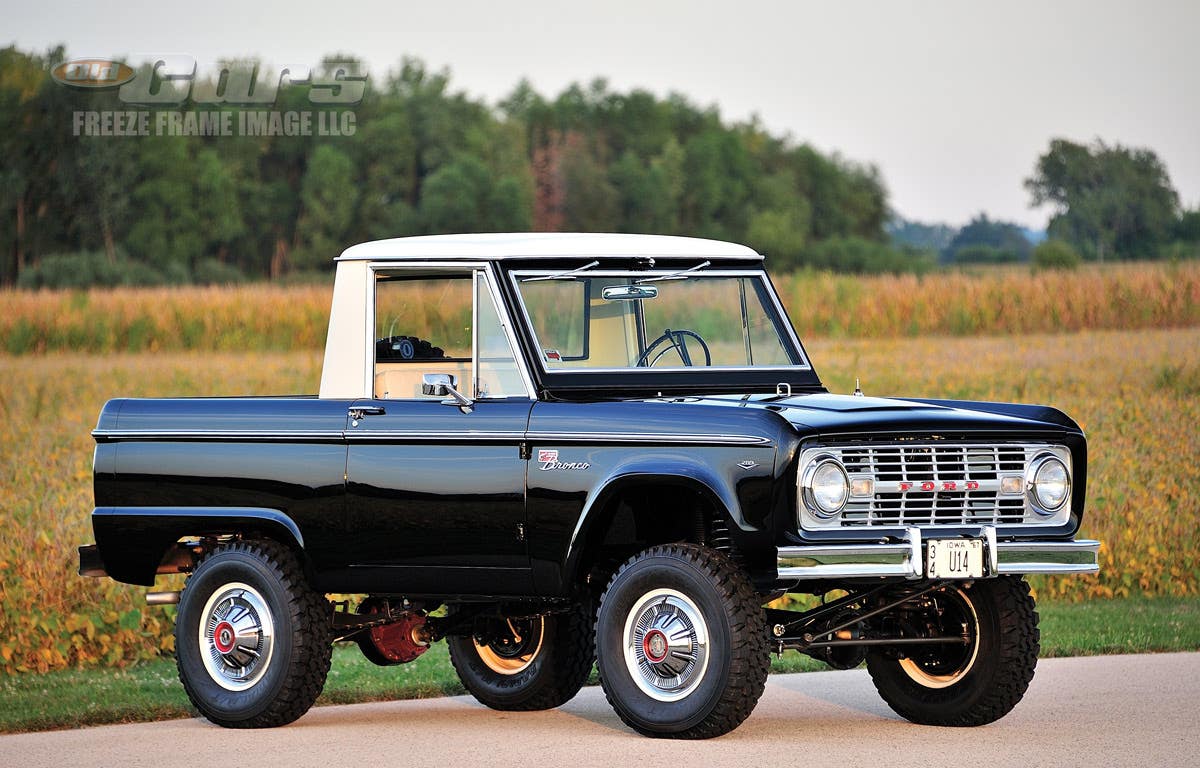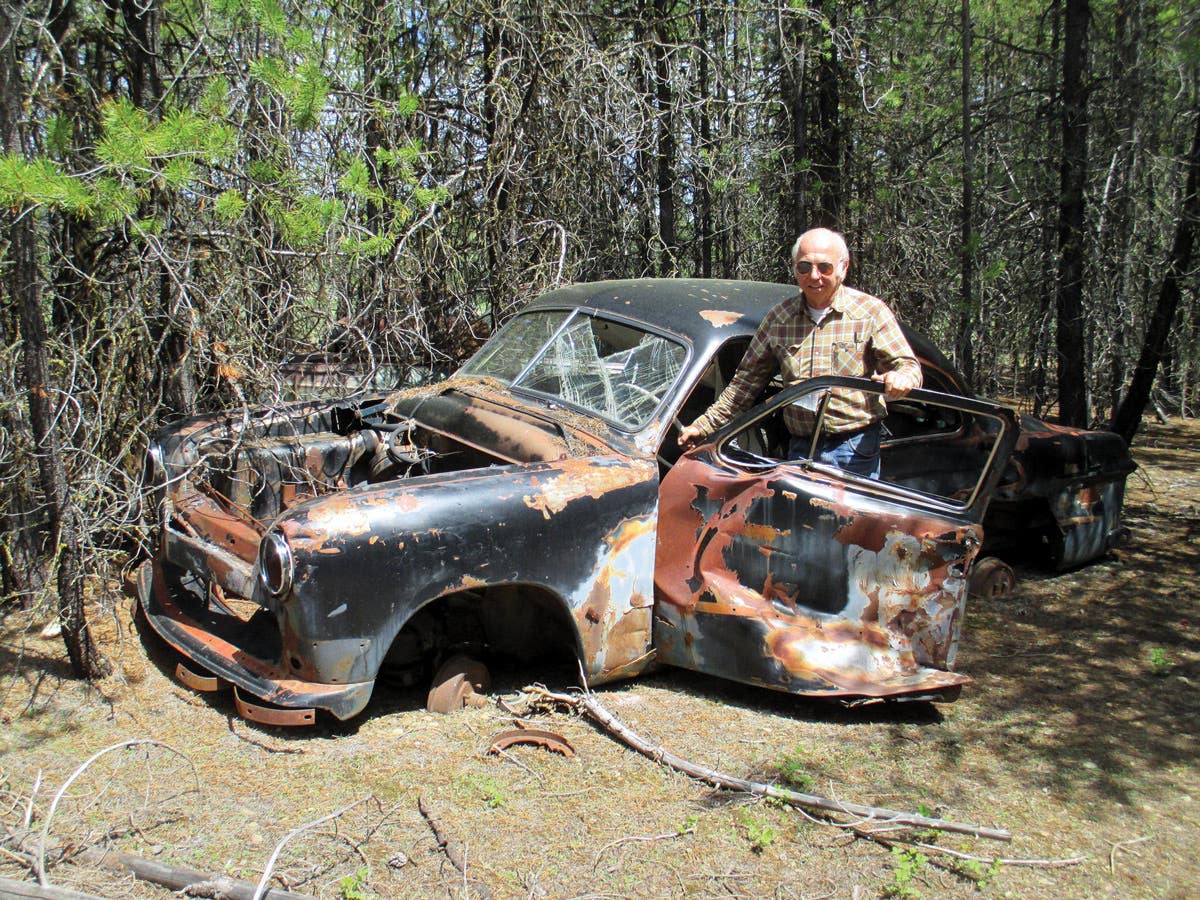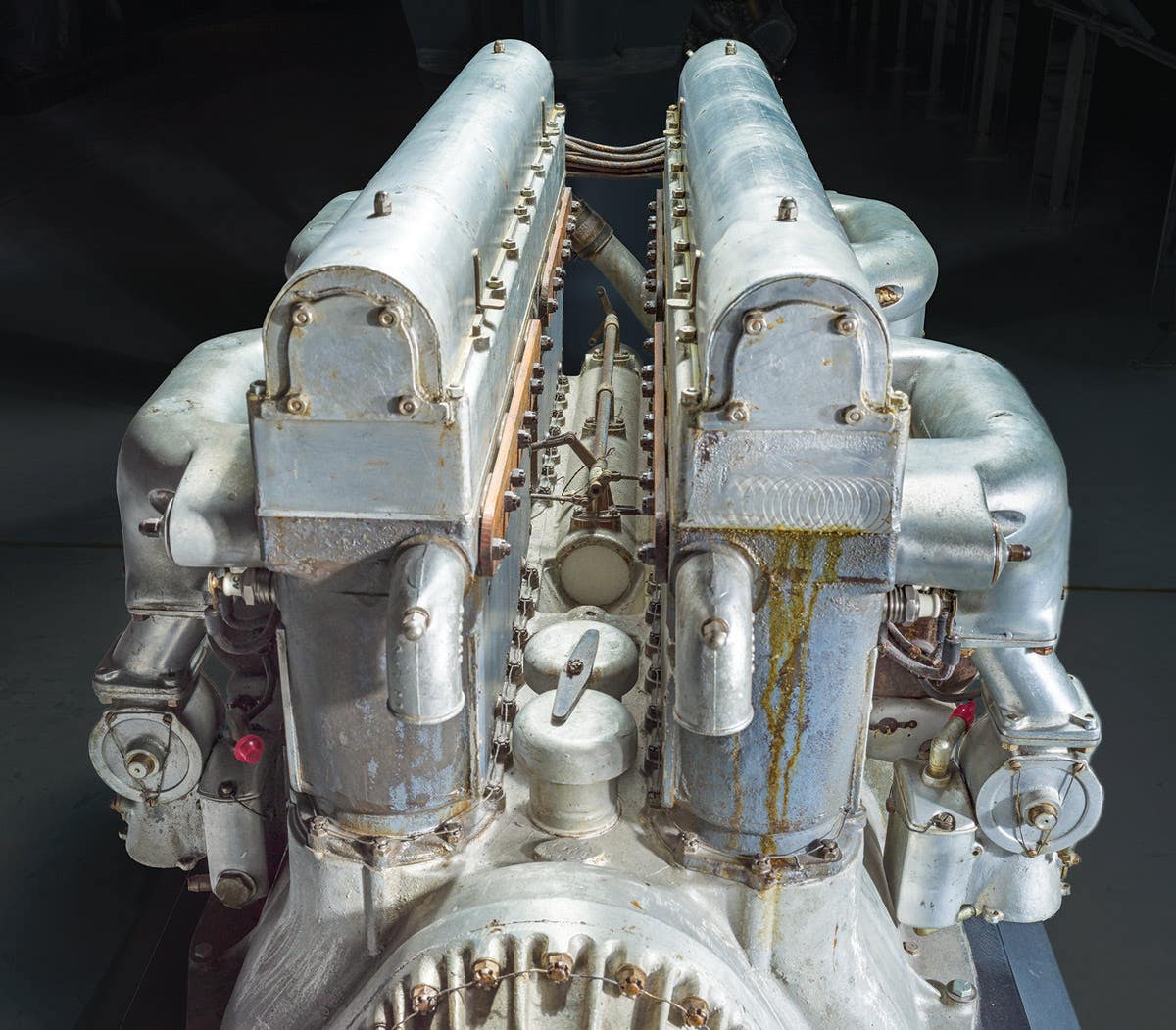Mustang enthusiast and collector Kelly Schultz has bought more than 100 Boss 302 Ford Mustangs since 1987, many of them after creating his side business, Kelly’s Muscle Cars, in Follett, Texas. In 2018, Schultz acquired a 1970 Boss 302 out of Shreveport, La., that appealed to him because of its Calypso Coral paint color that reminded him of a favorite Boss from his past. The seller advised Kelly that Calypso Coral was not the car’s original color, but that didn’t bother Kelly in the least. He preferred that bright orange shade on a Boss 302, and he planned to use this car as a driver rather than a show car.
“Whoever painted the car did a good job of stripping the original paint,” Kelly says. “But I did spot small remnants of metallic green from the factory paint.”
The Boss’s certification label on its left door has a blank color code and six-digit District Sales Office (DSO) code, confirming that it had been specially ordered in a non-Mustang color; that makes it one of just 64 “Special Paint” Boss 302s built for 1970.
The Deluxe Marti Report confirmed Schultz’s suspicion as it lists “Special Paint, Ford # unknown,” and two sets of invoices show “Special Paint” at the bottom of the option list.
The Boss’s option list is long, but not in the usual Boss 302 way. Instead of the popular image items such as the Shaker hood scoop, rear window slats and rear spoiler, this Boss 302 was ordered from Detroit’s Stark-Hickey Ford with the Décor interior, power steering, console, electric clock, 3.91 Traction-Lok differential and Magnum 500 wheels, as shown on its Deluxe Marti Report and factory invoices.
Schultz kept the Calypso Coral Boss 302 for three years before selling it to one of his clients, collector Roland Rodriquez, who was intrigued by the car’s rare Special Paint status. As part of the sale, Rodriquez requested that Schultz oversee the Boss 302’s restoration to its unconfirmed original color. Schultz turned to his go-to restorer, Jason Billups, of Billups Classic Cars, in Colcord, Okla. Once the Boss 302 was stripped down and more samples of the original paint were revealed, Billups used a paint-chip color wheel to determine a match. The match was found to be “WT 7819 Green Metallic,” a fleet color listed in Ford’s 1970 Special Order Paint Selector. Fleet paints were available to buyers of multiple vehicles intended for business use. Seeing how the Marti Report shows the order type as “Fleet,” perhaps the original purchaser of the Boss 302 wanted his Boss 302 to match his fleet of green delivery trucks. Maybe it was even the boss’s company fleet vehicle!
As part of the restoration, the added rear window slats and rear spoiler were removed to match the Marti Report and factory invoices, returning the Boss 302 to its original no-frills appearance. The Boss 302 is even made more plain by its missing standard Boss 302 front spoiler, which was not installed at the time of our photography.
During the restoration, Billups chose to retain the dual sport mirrors that were on the car when purchased by Schultz. (Special Paint 1970 Boss 302s came with a single driver’s door chrome rearview mirror, as confirmed by the window sticker’s “LH remote control mirror substituted for color-keyed racing mirrors.”)
Now restored to like-new in its original special-order paint, and detailed down to the correct Thermactor emission system and rev limiter, the Special Paint Boss 302 is now a prized part of Rodriquez’s private, 100-plus car collection.
Building the Boss
The Mustang Boss 302 was built in 1969 and 1970 as a high-performance street car for Ford Motor Co. to homologate 302-cid V-8-powered Mustangs into the SCCA’s Trans-Am racing series. In the Trans-Am series, the Boss 302 initially raced against Chevrolet Camaros, the Mustang’s younger competitor. (Chevrolet had quickly developed its own Trans-Am race car, the Z/28, which was ready shortly after the model’s 1967 introduction.) The Boss 302s that raced on the SCCA circuit were specially prepped versions of the street cars, but Boss 302s nonetheless.
Both the Boss 302 and likewise-homologated Camaro Z/28 were powered by 302-cubic-inch V-8s to meet the Trans-Am series’ requirement of engine displacements of 305 cubic inches or fewer. The 302 engine used in the Boss was unique to that model in several ways.
The Boss 302, available only as a fastback, was the ultimate evolution of the 260- and 289-cid Mustang V-8 introduced in 1965, with special cylinder heads that gave it a performance advantage over the previous small-block Mustangs. These “Cleveland” heads (so called because of their similarity to those used on the 351-cid engine made in Ford’s Cleveland, Ohio, foundry) used canted intake and exhaust valves that permitted the fitting of bigger ports and valves and a straighter-flowing fuel/air mixture that gave better volumetric efficiency.
Boss 302 intake valves measured a massive 2.23 inches in 1969, and exhaust valves were 1.71 inches — incredibly large for a production-type small-block engine. “Semi-hemi” combustion chambers were also different from those of the earlier small-blocks, with an advanced wedge design that resembled the shape of the chambers in the Ford 427 racing engine. The camshaft had 290 degrees of duration for both valves, and a .290-inch lift. The crankshaft, balanced both statically and dynamically (with the rods and pistons in place), was made of forged steel to stand up to high rpm. It was anchored in place by five main bearings, of which the three center units had four-bolt caps. Forged steel connecting rods were used. Other features included a high-rise, aluminum intake manifold with a single 780-cfm four-barrel Holley carburetor; pop-up type pistons; a dual-point distributor; a high-pressure oil pump; lightweight, stamped rocker arms; screw-in rocker arm studs and pushrod guide plates (with specially hardened pushrods); an oil pan windage baffle; and screw-in freeze plugs. The Boss 302’s engine block was of a unique thin-wall, high nickel content casting.
After considering the car’s target audience, Ford wisely chose to install only manual transmissions (there were two to choose from) in the Boss 302, with a floor-mounted Hurst shifter handling shifting chores. Surprisingly, the wide-ratio four-speed was best suited with the 302 for street performance and drag strip use. The close-ratio option was better utilized for road racing.
According to published reports at the time, the Boss 302 out-classed “most of the world’s big-engined muscle cars.” Others reported a slightly modified G-code Boss 302 engine would keep increasing power clear up to 8,000 rpm, which suggests that some owners were bypassing the rpm limiter that kicked in around 5,800 rpm and randomly cut spark to the cylinders to keep the revs under about 6,150 rpm. Clearly, Ford’s peak horsepower rating of 290 at 5,800 rpm was conservative, although it was convenient for advertising, as the Camaro Z/28 advertised that number.
Three axle ratios were offered: a standard 3.50 non-locking version, plus the Traction-Lok 3.50 and 3.91. There was also a No-Spin axle available with a 4.30 ratio built by Detroit Automotive. To prevent buildup of stress points in the axle shafts, Ford installed fully machined units with larger axle shaft splines, an extra-strength cast nodular iron center section and larger wheel seals.
Handling of the Boss 302 benefit from a lower stance. Because it would be called upon to keep the Boss stuck to corners on the racetrack, the front suspension received high-rate (350 inch-pounds) springs; heavy-duty, direct-acting Gabriel shock absorbers; and a special steel stabilizer bar with specifically calibrated rubber mounts. The Hotchkiss-type rear suspension had 150 inch-pounds leaf springs and it used a staggered shock absorber arrangement. The left shock absorber was bolted behind the axle and the right one was ahead of the axle. Wheel hop, bounce and the tendency of the tires to break tread were substantially controlled with this setup. Ford also added a rear stabilizer bar for improved cornering. This induced a little oversteer, but helped keep the rear end from swaying.
The Boss 302 brake system included discs in the front and power assist. Power steering was available as an option to help with the quick 16:1 ratio — especially desirable with the wide F60-15 tires. Final details on the 1970 Boss 302 package included black taillamp bezels, headlamp bezels and tail panel; a black chrome backlight molding; black front spoiler; color-keyed, dual racing mirrors; dual exhausts; hubcaps with trim rings; black 3M tape stripes and Boss 302 identification; a 45-ampere battery; and a Space-Saver spare tire.
From the driver’s seat, the Boss was still basic Mustang in layout, with circular gauges, dash lamps to monitor oil pressure and electrical systems, and a tachometer. Two very desirable Boss options were an adjustable rear deck lid spoiler and rear window SportSlats. To qualify as a production model by Trans-Am racing rules, Ford was required to produce a minimum of 1,000 Boss 302 Mustangs; the car’s popularity racked up 1,628 sales in 1969 and 7,014 (or 7,013, depending on the source) were built for 1970.
The 302’s bigger brother, the Boss 429, was born because Ford had still another engine it wanted to place into competition — this time on the NASCAR circuit. The decision was made to install the new-for-1969 429-cid semi-hemi big-block in the popular Mustang platform after predictions that it would be easier to sell 500 such models than a Torino-based supercar. Kar Kraft, an aftermarket firm in Brighton, Mich., was contracted to build Boss 429s. Since the Mustang’s engine compartment was not designed to house such a wide powerplant, the job required a big shoehorn and a lot of suspension changes and chassis modifications.
The 1970 Boss 302 was a runner in its own right, and could accelerate from 0 to 60 mph in 6.9 seconds and cover the quarter mile in 14.6 seconds at a top speed of 98 mph.
Love 'Stangs? Here are a few more articles for your reading enjoyment.
SHOW US YOUR WHEELS!
If you’ve got an old car you love, we want to hear about it. Email us at oldcars@aimmedia.com
If you like stories like these and other classic car features, check out Old Cars magazine. CLICK HERE to subscribe.
Want a taste of Old Cars magazine first? Sign up for our weekly e-newsletter and get a FREE complimentary digital issue download of our print magazine.



